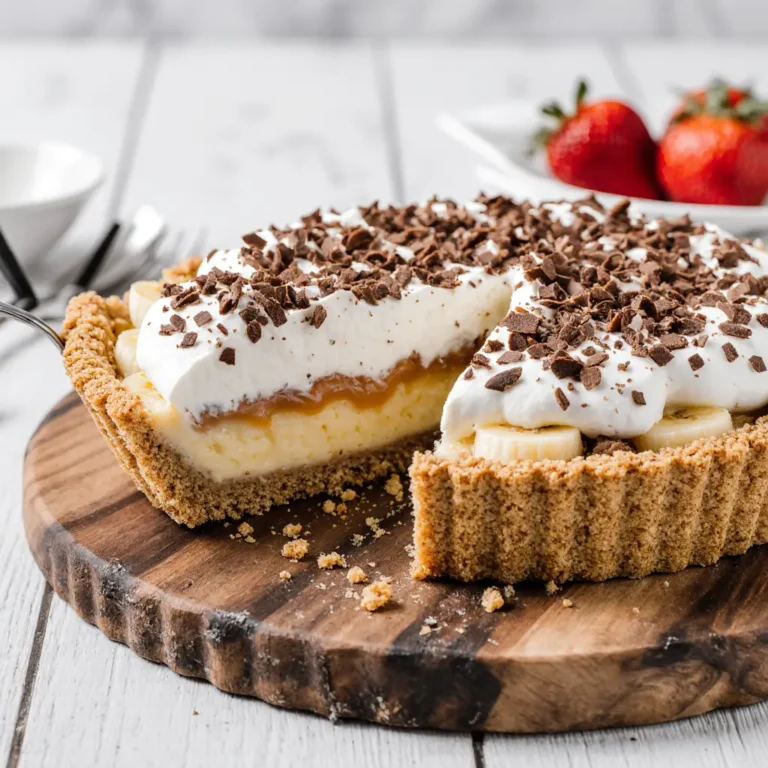Fluffiest Cinnamon Rolls Recipe: Irresistibly Soft & Easy

Introduction
Have you ever wondered what makes cinnamon rolls truly fluffiest, irresistibly soft, and easy to make at home? Many bakers struggle to achieve that perfect pillowy texture without spending hours kneading dough or waiting for it to rise. The secret lies in the method, choice of ingredients, and a few insider tips that can elevate your homemade cinnamon rolls from good to unforgettable. In this post, we’ll guide you through an expert-approved approach to baking the fluffiest cinnamon rolls that are soft on the inside, perfectly golden on the outside, and bursting with warm cinnamon flavor.
Whether you’re a beginner or a seasoned baker, this recipe simplifies the process while ensuring a bakery-quality result that’ll have everyone asking for seconds.
Ingredients List
Creating the fluffiest cinnamon rolls starts with the right ingredients. Here’s what you’ll need:
– 1 cup warm whole milk (about 110°F/43°C) – for activating yeast
Substitution: almond or oat milk for a dairy-free alternative
– 2 ¼ teaspoons active dry yeast (1 packet)
– ½ cup granulated sugar
– ⅓ cup unsalted butter, melted (plus extra for greasing)
Substitution: coconut oil or vegan butter
– 2 large eggs
– 4 cups all-purpose flour
Substitution: gluten-free flour blend (ensure it can be substituted 1:1)
– 1 teaspoon salt
– 2 tablespoons ground cinnamon (for the filling)
– ½ cup packed brown sugar (for the filling)
– ½ cup unsalted butter, softened (for the filling)
– 1 teaspoon vanilla extract (optional, adds depth to the dough and frosting)
Optional Cream Cheese Frosting:
– 4 ounces cream cheese, softened
– ¼ cup unsalted butter, softened
– 1 cup powdered sugar
– ½ teaspoon vanilla extract
Timing
Understanding the timing of your cinnamon rolls helps make the process stress-free and enjoyable:
– Prep time: 20 minutes
– Dough rising: 1 to 1.5 hours (until doubled in size)
– Assembly and second rise: 45 minutes
– Baking time: 20 to 25 minutes
– Total time: Approximately 3 hours (mostly hands-off rising time)
The dough’s rising times allow the yeast to work its magic, creating that signature airy texture. While it might feel like a long wait, the result is a soft, fluffy roll that melts in your mouth.
Step-by-Step Instructions
Step 1: Activate the Yeast
Warm the milk until it feels slightly warm to the touch. Sprinkle the yeast over the milk and add 1 tablespoon of sugar. Stir lightly and let it sit for 5-10 minutes until foamy. This step ensures your yeast is alive and ready to work.
Chef’s tip: Avoid overheating the milk as it can kill the yeast, preventing proper rising.
Step 2: Mix the Dough
In a large bowl, combine the melted butter, remaining sugar, eggs, and vanilla extract if using. Gradually add the foamy yeast mixture. Slowly mix in the flour and salt until a sticky dough forms.
Step 3: Knead the Dough
Turn the dough out onto a floured surface and knead for about 7-10 minutes until smooth and elastic. Alternatively, use a stand mixer with a dough hook for 5-7 minutes on medium speed.
Chef’s tip: Kneading develops gluten, creating the structure necessary for fluffy rolls.
Step 4: First Rise
Lightly grease a large bowl and place the dough inside, turning it once to coat. Cover with a damp cloth or plastic wrap and let it rise in a warm area for 1 to 1.5 hours until doubled in size.
Chef’s tip: To create a warm environment, preheat your oven to 200°F, turn it off, and place the covered dough inside.
Step 5: Prepare the Filling
Mix softened butter, brown sugar, and ground cinnamon in a bowl until creamy and evenly combined.
Step 6: Roll and Fill the Dough
Punch down the risen dough and roll it out into a rectangle approximately 16×12 inches. Spread the cinnamon filling evenly, leaving a small border around the edges.
Step 7: Shape the Rolls
Starting from the long edge, tightly roll the dough into a log. Using a sharp knife or dental floss, cut the log into 12 equal rolls.
Step 8: Second Rise
Place the rolls cut-side up into a greased 9×13-inch baking pan. Cover loosely and let them rise for 30-45 minutes until puffy.
Step 9: Bake
Preheat your oven to 350°F (175°C). Bake the rolls for 20-25 minutes until golden brown but still soft to the touch.
Step 10: Frost and Serve
Allow rolls to cool slightly, then spread with cream cheese frosting or your favorite glaze.
Chef’s tip: For extra gooey rolls, frost while warm.
Nutritional Information
Per roll (approximate):
– Calories: 340
– Carbohydrates: 45g
– Protein: 6g
– Fat: 12g
– Saturated Fat: 7g
– Sugars: 22g
– Fiber: 1g
– Sodium: 220mg
Healthier Alternatives
Looking to lighten up your cinnamon rolls without sacrificing flavor? Consider these swaps:
– Use whole wheat or spelt flour instead of all-purpose to add fiber.
– Replace sugar with coconut sugar or a stevia blend to reduce refined sugars.
– Swap butter with heart-healthy oils like avocado or olive oil.
– Use plant-based milk for a lactose-free option.
– Skip or reduce frosting to cut down on sugar and fat.
Serving Suggestions
Cinnamon rolls are incredibly versatile and pair beautifully with:
– A dollop of Greek yogurt and fresh berries for added tang.
– Warm apple cider or a robust coffee for the perfect breakfast combo.
– Drizzles of caramel or maple syrup for an indulgent treat.
– Seasonal toppings like toasted pecans or dried cranberries for extra texture and flavor.
Try warming leftover rolls in the microwave for 10 seconds before serving to regain their softness.
Common Mistakes to Avoid
– Using water that is too hot or cold: This can deactivate or slow the yeast. Aim for warm milk around 110°F.
– Skipping the dough rise: It may seem impatient, but skipping or shortening rising times results in dense rolls.
– Overfilling the rolls: Too much filling can make the dough soggy or cause it to leak during baking.
– Using dull knives to slice: A sharp knife or dental floss ensures clean cuts; otherwise, rolls can squish and lose shape.
– Overbaking: Keep an eye on the color to maintain softness; baking too long dries them out.
Storing Tips
– Store any leftover cinnamon rolls in an airtight container at room temperature for up to 2 days.
– For longer storage, wrap tightly in plastic wrap and freeze for up to 3 months.
– Reheat frozen rolls in the microwave or oven wrapped in foil to retain moisture.
– Avoid refrigerating as it can dry out the rolls quickly.
Conclusion
Mastering the art of irresistibly soft cinnamon rolls is all about the right ingredients, careful rising, and a bit of love in the rolling process. With this easy-to-follow and foolproof method, you’re set to enjoy bakery-quality cinnamon rolls from your own kitchen. Ready to impress family and friends on your next breakfast or brunch? Don’t forget to share your baking adventures in the comments below or subscribe for more delicious recipes!
FAQs
Q1: Can I make these cinnamon rolls vegan?
A1: Absolutely! Substitute dairy milk with plant-based milk, butter with vegan margarine or coconut oil, and use a flax or chia egg instead of chicken eggs. The texture remains wonderfully soft.
Q2: Is it possible to prepare the dough the night before?
A2: Yes! After kneading, you can refrigerate the dough overnight covered tightly. Let it come to room temperature and rise before rolling out the next day.
Q3: How do I keep cinnamon rolls from becoming too sweet?
A3: Adjust the amount of sugar in the filling and frosting to suit your preference or replace some sugar with natural sweeteners like honey or maple syrup.
Q4: Can these rolls be made gluten-free?
A4: Using a 1:1 gluten-free flour blend can work, though texture may vary slightly. Ensure your gluten-free flour contains xanthan gum for better elasticity.
Q5: What’s the best way to reheat leftovers without drying them?
A5: Warm rolls wrapped in a damp paper towel in the microwave for 15-20 seconds or bake covered with foil at 300°F for 10 minutes to restore softness.
—
For more delightful baking adventures, check out our Ultimate Homemade Bread Recipes or our Top Kitchen Tools Every Baker Needs to elevate your skills. Happy baking!






